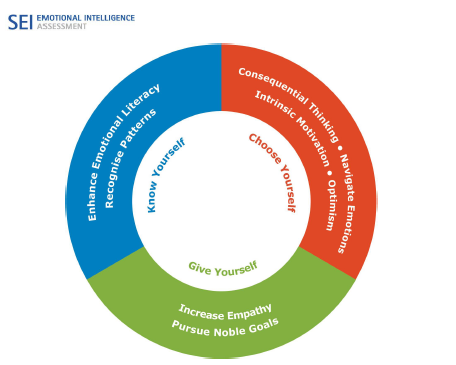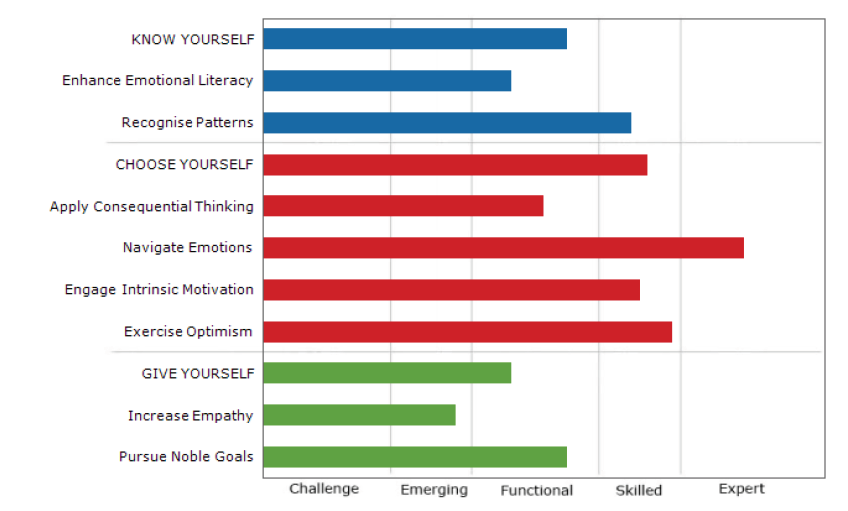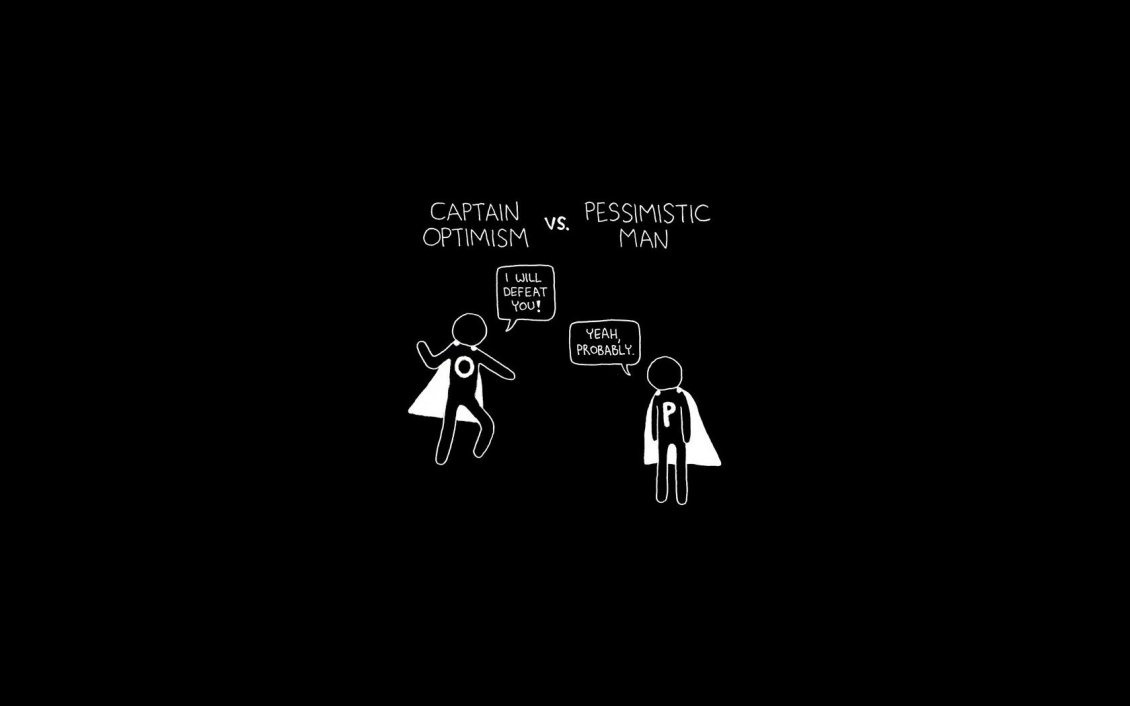Optimism is one of the 8 emotional competences of the Six Seconds EQ model. This is part of the “Self-Management” area. Self-Management invites us to act intentionally. I had the chance to work with leaders kean to know their level of EQ and how to empower this fundamental skill.

Let’s take a step back. Six Seconds offers a powerful tool (i.e. SEI Leadership Report, LR) to help leaders answering key questions like: “What does it look like to implement emotional intelligence as a leader? Where are you now? What’s next for you to leverage your EQ to improve people-leadership?”
The SEI LR delivers clear feedback and a path for using EQ to improve the people-side of leadership. It is the ideal blend of simplicity, clarity, and practicality. It is hard-hitting enough to engage results-oriented leaders. It is the preeminent tool for in-depth development programs and coaching programs. While it can be understood quickly, the LR is substantive enough for ongoing growth and coaching. That was the base I used to trigger individual growing paths as well as to increase self-awareness in leaders aiming to work on teams’ EQ. In more than 20 pages report, you can appreciate how it:
- Contextualizes EQ as a resource for four key performance areas: Effectiveness, Wellbeing, Quality of Life, and Relationships.
- Frames EQ in language leaders understand – it’s about using your capabilities to improve results with and through people.
- Illustrates current EQ levels in a “snapshot” showing how each EQ competency appears in typical leadership situations.
- Recommends next steps and strategies based on the current scores of every competency.

The SEI Leadership Report begins with an (1) executive summary, introduces (2) scores on current performance outcomes, (3) introduces EQ with a process-framework for action, then details each competency. As EQ Assessor, I help the leader to enhance the EQ understanding as well as all the aspects of the 8 emotional competences. The very interesting part is not the result itself, shown through the graph, while the correlations between the different emotional competences. E.g. having high Exercise Optimism and a low Apply Consequential Thinking can represent a profile underestimating risks and opening the “doors” to lot of opportunities – maybe too much! So, maybe worth being aware of the different situations we can face and how this could impact.
One of the competences that majority of the leaders found being crucial for both themselves and the team members is the optimism, so I decided to dedicate an article to this topic.
Optimism is not believing that issues don’t exist or that we should avoid them. It is the ability to look at the issues and to think to all the possible options we have to change the situation. Optimism is about choice! If we face an issue, we should ask ourselves: what is within my control? Which are the options I have here? This increases our sense of ownership and the responsibility we have in that. It is demonstrated that optimistic people are more successful in life and business. We got access to lot of these knowledge thanks to Seligman. In his “Learned Optimism” book, he explains all the scientific researches he (and his team) lead to define the concepts of “Learned Helpless”, “Cognitive Therapy” and “Explanatory Style”. Here you can find a smart and quick recap of all his researches and the outcomes.
From a pessimistic explanatory style (i.e. an adversity is Permanent, Pervasive and Personal) you should go to an optimistic one (i.e. an adversity is Temporary, Isolated and External) and this is feasible! He suggests this powerful approach, called “ABCDE”. Lot of times we find ourselves ready to pronounce self-inflicting judices, really permanent, pervasive and personal. Step 0 is to be aware about them. Once you are in front of an (A) “Adversity”, you should note that one and (B) write down the “Belief” you have as well as the (C) “Consequence”. In order to move to a more optimistic approach, you should then (D) “Discuss” that belief, challenging yourself with data, alternatives and implications – bringing the adversity to a “Temporary”, “Isolated” and “External” dimension. You will see how pessimistic people – majority of the times – tend to overestimate issues and to see them bigger than they are! After this practice you will be (E) “Energized” ! Let’s have a diary where you note down all these examples, day by day! Discussion is the key to go from a pessimistic to an optimistic explanatory style, so let’s train it.
Beliefs are beliefs and they can be false: if we think something about ourselves, it doesn’t mean it’s true! Some beliefs lead to passive attitude, leading people to fail (self-fulfilling prophecy). Emotions and actions do not come directly from adversities, but they are triggered by what we believe about the situations. So, let’s discuss automatic beliefs: listen to what you tell yourself every time you feel sad, anxious or angry! If your beliefs are true, focus on how you can change the situation so that it does not become a disaster. Generally speaking, negative beliefs are distortions that you should change. Optimistic people think that failures are not necessarily caused by them, but rather by circumstances. This helps them to not lose hope and energy, to be resilient and to ultimately hold higher probability to succeed.

No responses yet